My Man Called Me Beef Stew After He Looked at My Vagina
As an Amazon Associate I earn from qualifying purchases. See my disclosure policy.
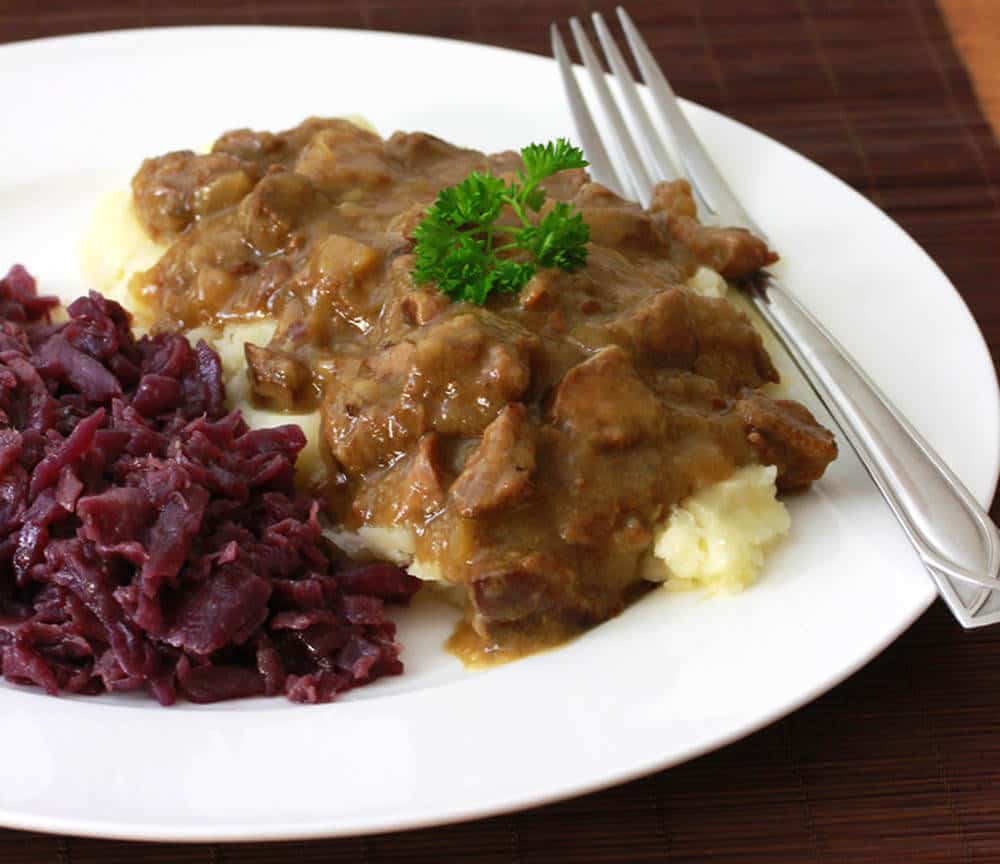
Hachee is a traditional beef and onion stew found in virtually every Dutch home. It's a delicious comfort dish to enjoy during the cold winter months. The long, slow cooking time produce super tender meat and a rich sauce with wonderful depth of flavor. Here is an authentic recipe that you're whole family will enjoy.
Eet smakelijk!
The wordhachee has its origins in the French hacher, meaning "to chop" and Hachee is sometimes referred to as a "hash." Hachee has been around since the middle ages and like many of the traditional dishes of Europe that we know and love today, it was originally a peasant dish, created as a means of using up leftover meat and vegetables. The vinegar was used to tenderize tough pieces of meat (much like French peasants used wine). Less expensive vegetables likes onions were used in generous amounts. A long cooking process further ensured the meat would be tender. Hachee remains a popular and much-loved dish in the Netherlands. So much so that you can find it ready-made in grocery stores. But nothing beats homemade, and your patience in the long, slow cooking process will yield results that you're entire family will love.
The flavor profile of Hachee is significantly different from the traditional beef stews we know here in the U.S.. Hachee uses equal parts of beef and onion and the onions are caramelized. The featured flavors in this stew are cloves, juniper berries, black peppercorns, bay leaves and vinegar – all of which come together to provide a wonderful depth of flavor that is both rich and comforting. The flavor of Hachee shares similarities with German Sauerbraten.
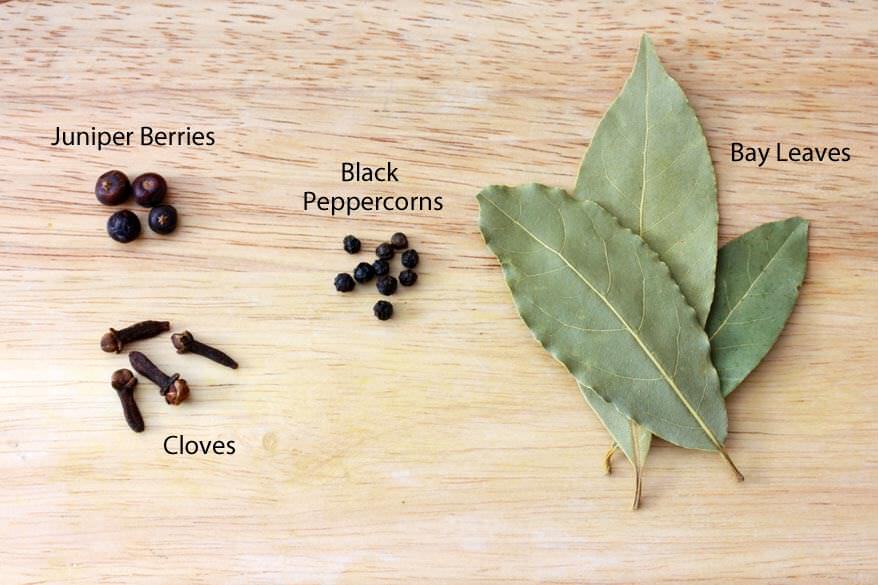
I made this last week when my husband's family came to WA for a visit. My father-in-law lived in the Netherlands for two years as a young man and fell in love with the country, its people, and its food. Many of the dishes he enjoyed then he hasn't had since – almost 40 years later – a fact he often laments. (Sorry for alluding to your age, John.) So I wanted to surprise him with a traditional Dutch meal. I narrowed it down to three options: Boerenkool Stampot, Hutspot, and Hachee. I decided on Hachee. It's a little more interesting, plus you can't find the smoked Dutch sausages (rookworst) here that are traditionally eaten with the other two dishes. And it also gave me the excuse to finally make the braised red cabbage with it – a side dish that is equally popular in Germany (Rotkohl) and that several of my readers have asked me about. My father-in-law readily recognized the dish. "This is the dish I had almost every night during my first two months in the Netherlands!" And he hadn't had it since until now. We all really enjoyed this Hachee. And the leftovers the next day, after the flavors had even more time to meld, were even better.
Let's get started!
Cube the beef and pat it dry with a paper towel – this will ensure that it browns well. Sprinkle with a little salt and pepper.
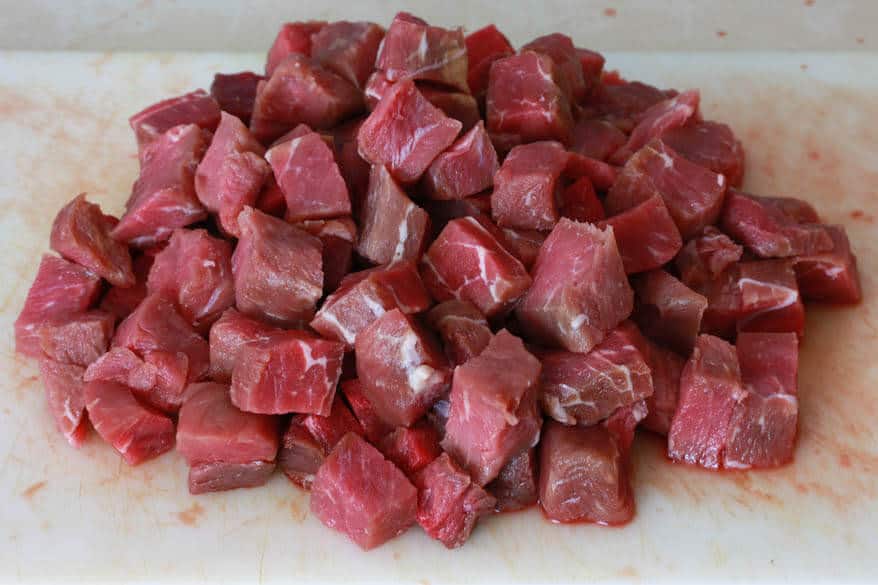
Chop the onions.
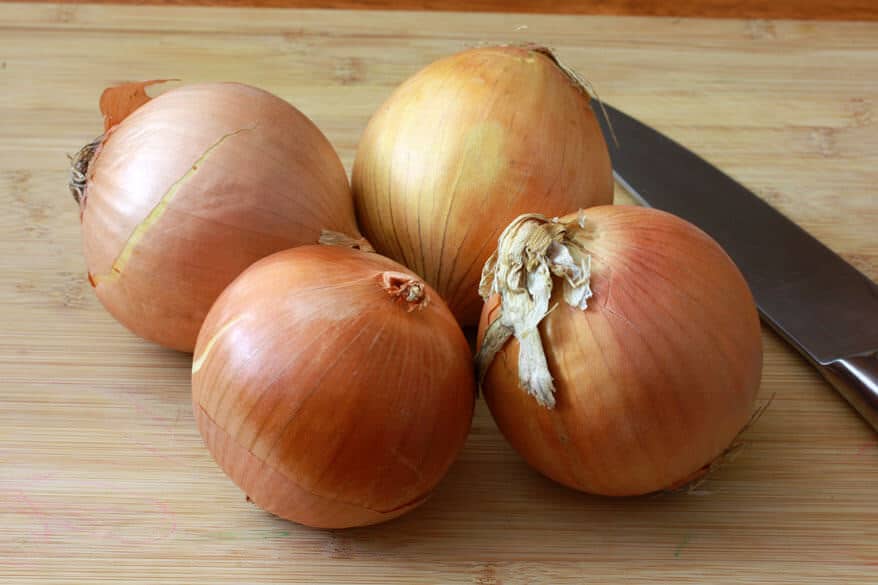
Brown the beef in a Dutch oven. Brown the cubes on all sides. Brown in batches so as not to overcrowd the beef – that will prevent it from browning properly. Remove the beef and set aside, leaving the burnt bits on the bottom of the pan – those will provide a lot of flavor to the stew.
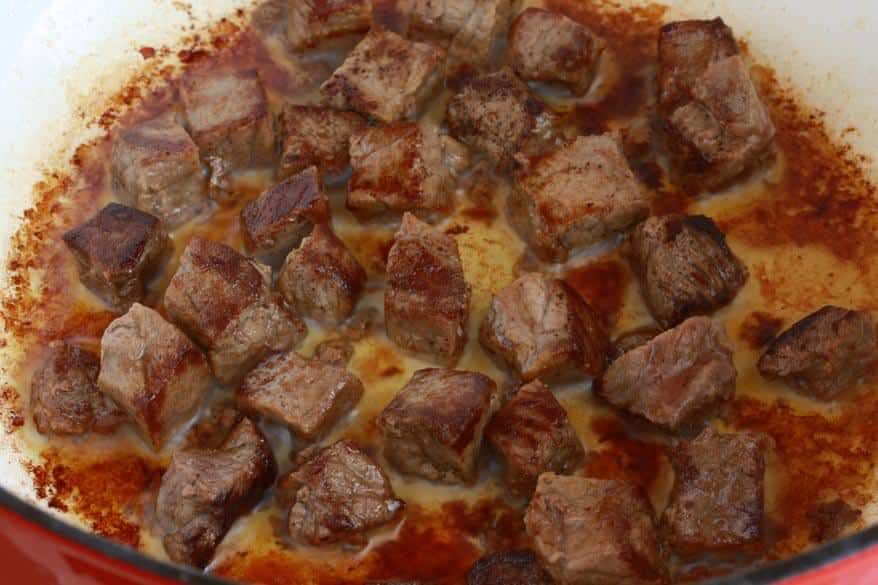
Add some more butter and caramelize the onions until golden brown. Add the flour and stir to combine.
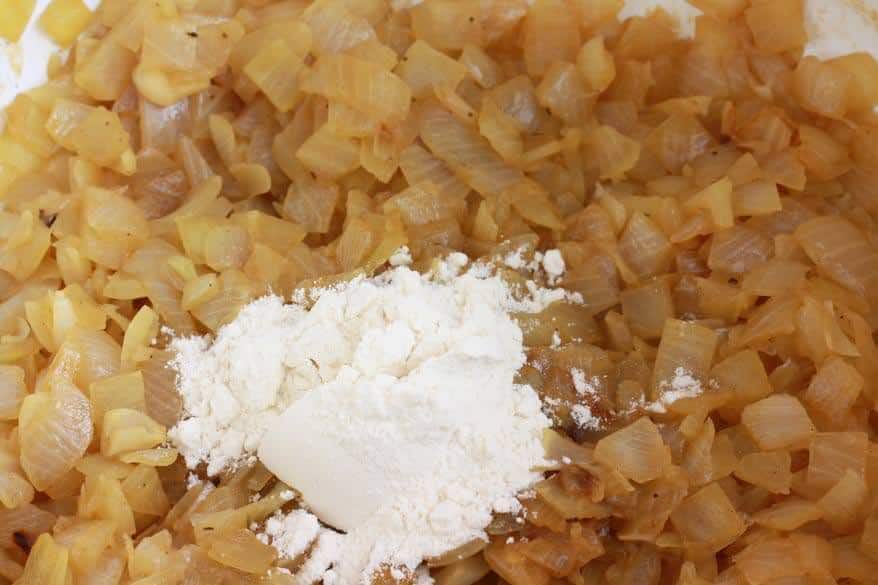
Add the beef to the onions.
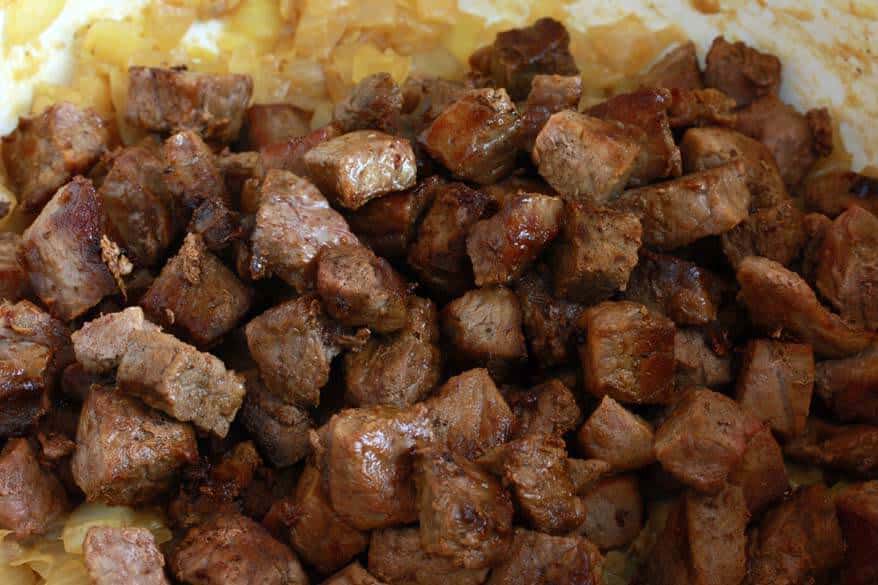
Add the beef broth and the seasonings. Bring to a boil, reduce the heat to low, cover and simmer for 2 1/2 hours. Uncover and simmer for another 30 minutes to help thicken the sauce. If it needs further thickening, make a slurry with equal parts of flour and water and stir it into the stew, stirring constantly to prevent lumping. Return to a simmer until the stew is thickened. Add salt, pepper and more red wine vinegar to taste.
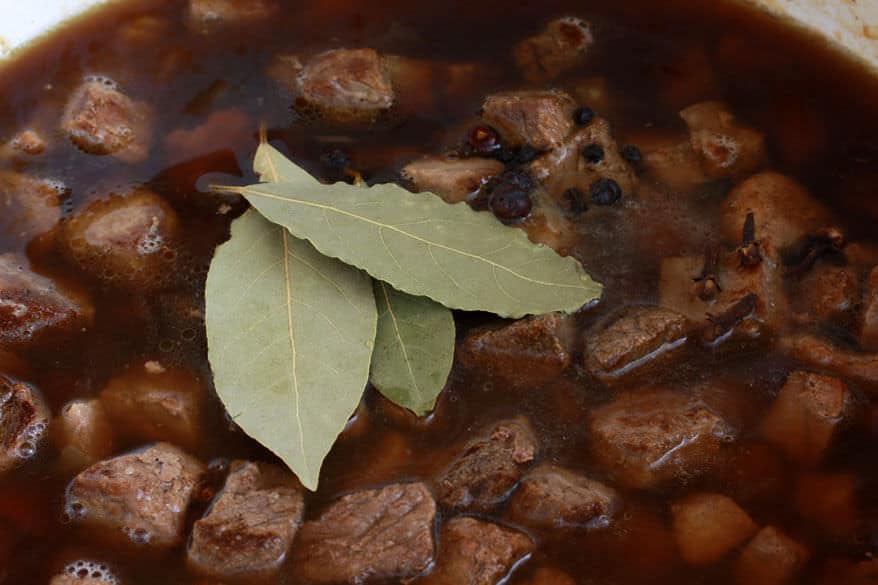
Hachee is traditionally served with aardappelen (potatoes) and rode kool met appeltjes (braised red cabbage with apples – click for recipe). A serving of applesauce is also common. Eet smakelijk!
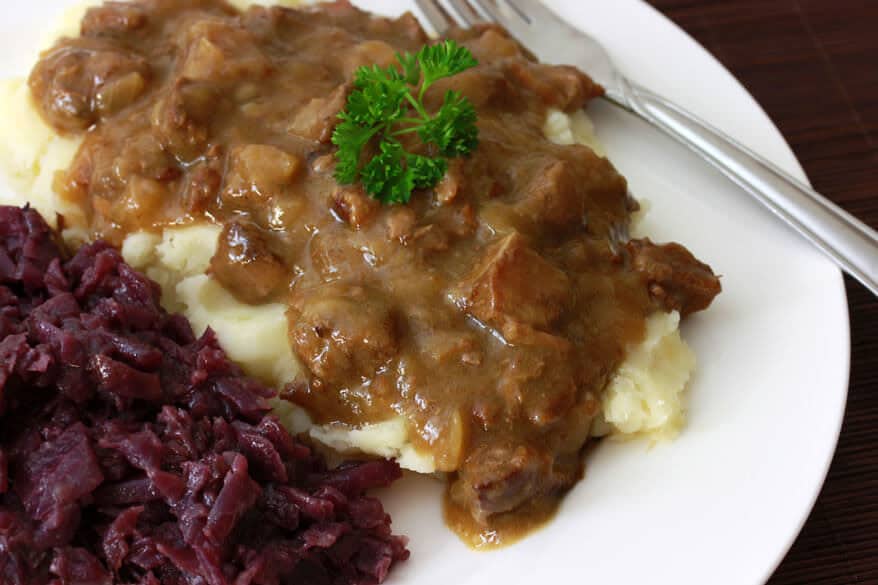
Hachee (Dutch Beef & Onion Stew)

Total time
- 2 pounds beef, cubed in ½ in. pieces, blotted dry with paper towel, lightly seasoned with salt and pepper
- 3 tablespoons butter
- 2 pounds yellow onions (about 4 large), finely chopped
- ¼ cup all-purpose flour
- 4 cups good quality beef stock
- 3 large bay leaves
- 4 cloves
- 4 juniper berries (look in health food stores or order online)
- 10 black peppercorns
- 2 tablespoons red wine vinegar
- ¾ teaspoon salt
- ¼ teaspoon freshly ground black pepper
- Melt the butter in a Dutch oven over medium-high heat. Brown the beef on all sides, working in batches so as not to overcrowd. Transfer to a plate and set aside. Leave the browned bits in the pan (important for flavor).
- Add the onions and some more butter if needed and cook until caramelized, about 25 minutes. Add the flour and stir until combined. Add the beef to the onions, stir to combine, and cover with the beef stock just until covered. Add the seasonings and red wine vinegar, stir to combine.
- Increase the heat and bring the stew to a boil. Reduce the heat to low, cover, and simmer for 2½ hours. Uncover and simmer for another 30 minutes to further thicken the stew. Add salt, pepper and more red wine vinegar to taste. Discard the juniper berries, cloves, and bay leaves. Leave in or discard the peppercorns.
- Serve with mashed potatoes and braised red cabbage.
3.5.3240
thomasyoultaithe94.blogspot.com
Source: https://www.daringgourmet.com/hachee-dutch-beef-onion-stew/
0 Response to "My Man Called Me Beef Stew After He Looked at My Vagina"
Post a Comment